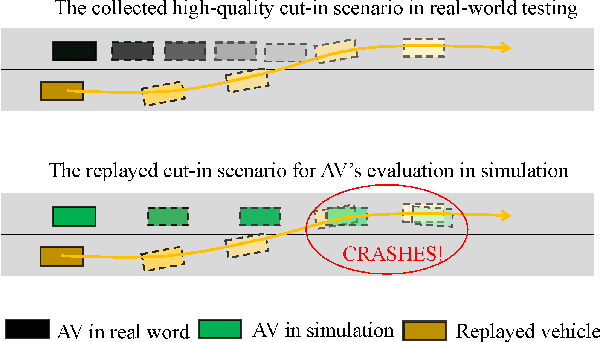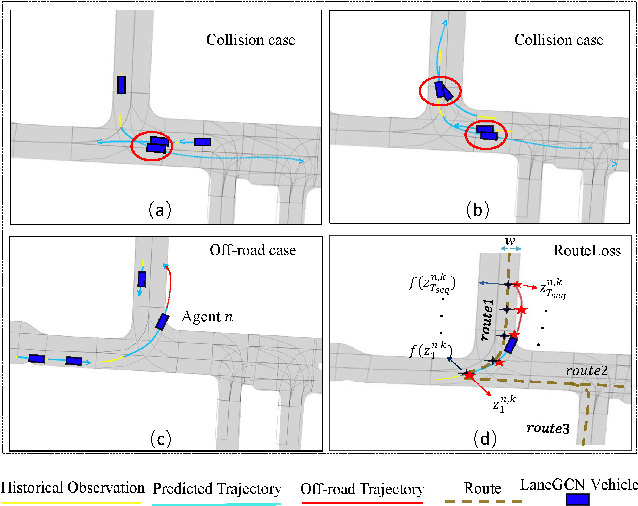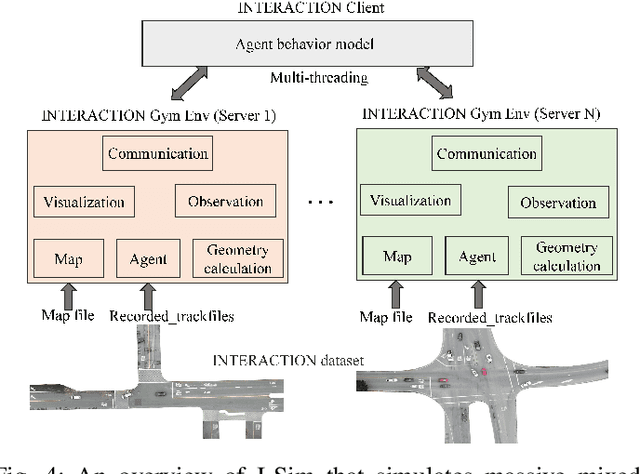Yinfeng Gao
ReasonPlan: Unified Scene Prediction and Decision Reasoning for Closed-loop Autonomous Driving
May 26, 2025Abstract:Due to the powerful vision-language reasoning and generalization abilities, multimodal large language models (MLLMs) have garnered significant attention in the field of end-to-end (E2E) autonomous driving. However, their application to closed-loop systems remains underexplored, and current MLLM-based methods have not shown clear superiority to mainstream E2E imitation learning approaches. In this work, we propose ReasonPlan, a novel MLLM fine-tuning framework designed for closed-loop driving through holistic reasoning with a self-supervised Next Scene Prediction task and supervised Decision Chain-of-Thought process. This dual mechanism encourages the model to align visual representations with actionable driving context, while promoting interpretable and causally grounded decision making. We curate a planning-oriented decision reasoning dataset, namely PDR, comprising 210k diverse and high-quality samples. Our method outperforms the mainstream E2E imitation learning method by a large margin of 19% L2 and 16.1 driving score on Bench2Drive benchmark. Furthermore, ReasonPlan demonstrates strong zero-shot generalization on unseen DOS benchmark, highlighting its adaptability in handling zero-shot corner cases. Code and dataset will be found in https://github.com/Liuxueyi/ReasonPlan.
Dream to Drive with Predictive Individual World Model
Jan 28, 2025Abstract:It is still a challenging topic to make reactive driving behaviors in complex urban environments as road users' intentions are unknown. Model-based reinforcement learning (MBRL) offers great potential to learn a reactive policy by constructing a world model that can provide informative states and imagination training. However, a critical limitation in relevant research lies in the scene-level reconstruction representation learning, which may overlook key interactive vehicles and hardly model the interactive features among vehicles and their long-term intentions. Therefore, this paper presents a novel MBRL method with a predictive individual world model (PIWM) for autonomous driving. PIWM describes the driving environment from an individual-level perspective and captures vehicles' interactive relations and their intentions via trajectory prediction task. Meanwhile, a behavior policy is learned jointly with PIWM. It is trained in PIWM's imagination and effectively navigates in the urban driving scenes leveraging intention-aware latent states. The proposed method is trained and evaluated on simulation environments built upon real-world challenging interactive scenarios. Compared with popular model-free and state-of-the-art model-based reinforcement learning methods, experimental results show that the proposed method achieves the best performance in terms of safety and efficiency.
TrajGen: Generating Realistic and Diverse Trajectories with Reactive and Feasible Agent Behaviors for Autonomous Driving
Mar 31, 2022



Abstract:Realistic and diverse simulation scenarios with reactive and feasible agent behaviors can be used for validation and verification of self-driving system performance without relying on expensive and time-consuming real-world testing. Existing simulators rely on heuristic-based behavior models for background vehicles, which cannot capture the complex interactive behaviors in real-world scenarios. To bridge the gap between simulation and the real world, we propose TrajGen, a two-stage trajectory generation framework, which can capture more realistic behaviors directly from human demonstration. In particular, TrajGen consists of the multi-modal trajectory prediction stage and the reinforcement learning based trajectory modification stage. In the first stage, we propose a novel auxiliary RouteLoss for the trajectory prediction model to generate multi-modal diverse trajectories in the drivable area. In the second stage, reinforcement learning is used to track the predicted trajectories while avoiding collisions, which can improve the feasibility of generated trajectories. In addition, we develop a data-driven simulator I-Sim that can be used to train reinforcement learning models in parallel based on naturalistic driving data. The vehicle model in I-Sim can guarantee that the generated trajectories by TrajGen satisfy vehicle kinematic constraints. Finally, we give comprehensive metrics to evaluate generated trajectories for simulation scenarios, which shows that TrajGen outperforms either trajectory prediction or inverse reinforcement learning in terms of fidelity, reactivity, feasibility, and diversity.
 Add to Chrome
Add to Chrome Add to Firefox
Add to Firefox Add to Edge
Add to Edge